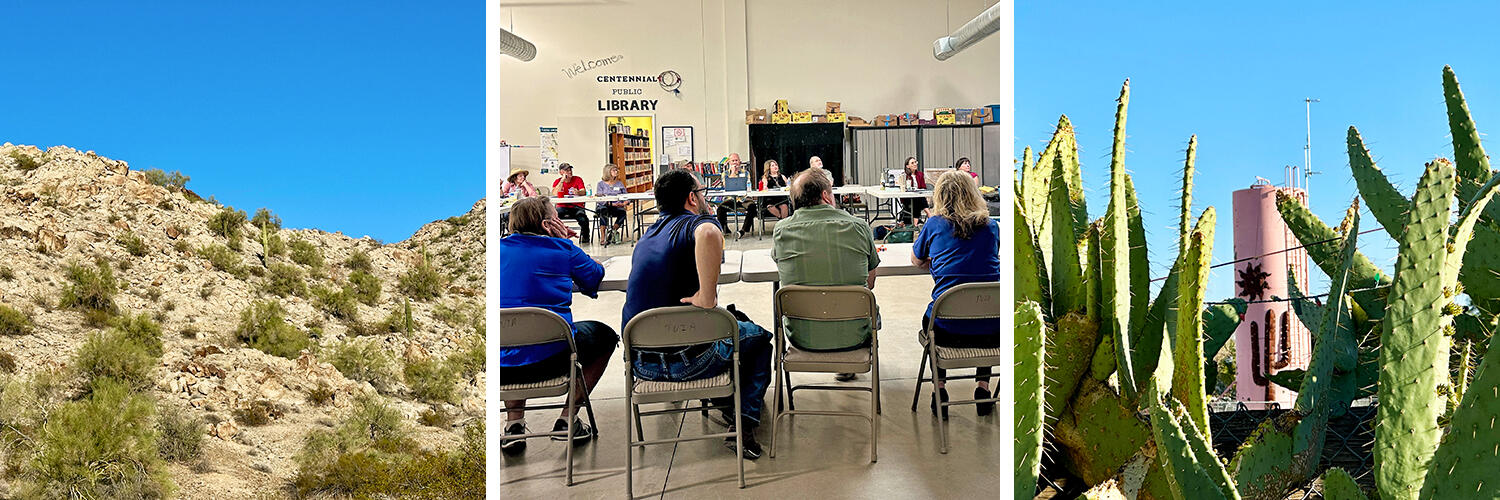
An Arizona community comes together to bolster rural groundwater resilience
It has been a decade since investigative journalists began sounding the alarm about groundwater overpumping in rural Arizona. In 2015, national attention turned to La Paz County in western Arizona when it was reported that foreign-owned farms were growing alfalfa using limited groundwater supplies.
For La Paz County Supervisor Holly Irwin, that moment marked the beginning of an ongoing effort to protect her community's most vital resource. Groundwater – defined as the water below Earth's surface stored in soil and rock formations – is a big issue not only around the world, but also in Arizona’s rural communities, where it is largely unregulated.
"I didn’t go looking for this issue. It came to me," Irwin has said of the early calls from concerned residents. As she listened to their stories about wells going dry, dropping water tables and rising costs, Irwin realized the scale of the challenge.
In 2024, Irwin was one of several rural leaders to reach out to Impact Water - Arizona, a program of the Arizona Water Innovation Initiative housed in the Julie Ann Wrigley Global Futures Laboratory at Arizona State University, when the team released a call for interest to co-develop a series of rural groundwater resilience workshops throughout the state.
Irwin learned of the workshops from Governor Hobbs’ office and says she was inspired to apply after watching Agriculture and Water in the West: A Community Takes Charge, a short film developed after a successful similar groundwater workshop in rural southeastern Arizona.
"Holly’s application stood out,” says Susan Craig, Impact Water - Arizona director, recalling Irwin’s outreach. “It was the perfect blend of everything we hoped to support - a dedicated local champion committed to water security in her community, paired with being in a priority basin with declining water levels. It was exactly the kind of alignment we envisioned when we launched this effort to offer a neutral convening space for these challenging issues.”
Irwin’s request set in motion a collaborative process led by Impact Water - Arizona in partnership with a local steering committee of residents and business owners, as well as the Babbitt Center for Land and Water Policy and the Arizona Institute for Resilience at the University of Arizona. Together, they organized a workshop to bring data, dialogue and direction to La Paz County’s groundwater challenges.
Groundwater in rural La Paz County
Established in 1983 by carving out part of Yuma County, La Paz is Arizona's youngest county. With just over 16,500 residents, it is small, rural and aging. More than 40 percent of residents are over 65 and many snowbirds call the county home in the cool season. The economy is primarily driven by agriculture and tourism. While parts of the area get some Colorado River water, most of the county is groundwater dependent.
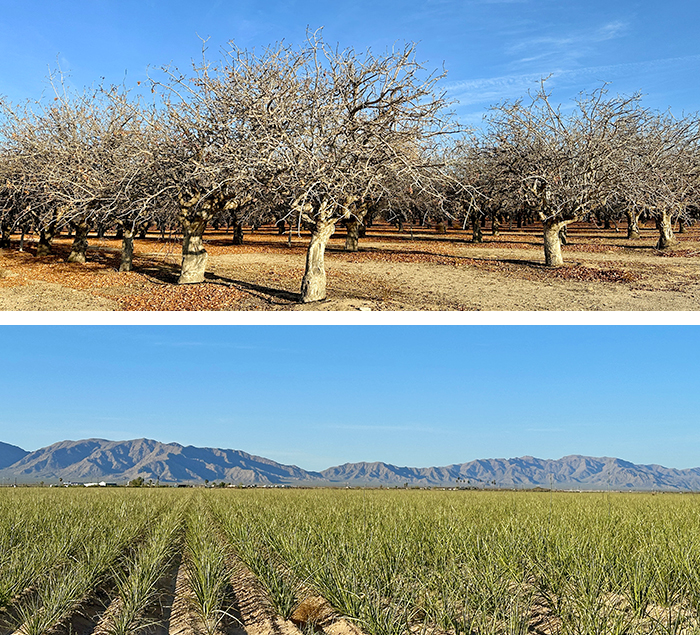
Residents say that foreign-owned agricultural operations have intensified pressure on the aquifer. Reporting has shown these entities often pump large quantities of groundwater. This can lead to local wells running dry, rising costs for water access and community members feeling increasingly powerless.
It is a big enough issue that Arizona Attorney General Kris Mayes filed a public nuisance lawsuit against one of those operations, Fondomonte Arizona, noting significant aquifer depletion that impacts the health and safety of residents. Fondomonte is no longer pumping in one groundwater basin in the area after Governor Hobbs directed the Arizona State Land Department to end their land leases.
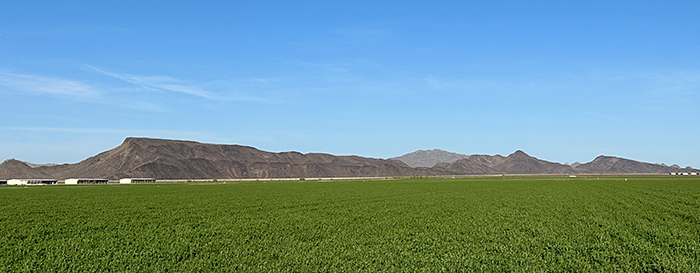
One of the biggest additional concerns expressed by residents is that La Paz County is also home to three of Arizona’s four designated "transportation basins," areas where groundwater can legally be exported to urban areas. These laws, created under Arizona's 1991 Groundwater Transportation Act, allow water from certain rural basins – including the Harquahala, Butler Valley and McMullen basins – to be pumped and piped to cities with Active Management Areas.
Each basin has specific rules around who can pump, how much and for what purposes, and the law includes limitations that aim to protect local water supplies and prevent over-extraction in rural areas. No transfers have been made to date, but with the uncertainty surrounding Colorado River supplies, it is becoming increasingly likely.

While legal, this has raised serious equity and sustainability concerns for residents, who say that these transfer basins have made La Paz a target for water speculation and extraction. Critics argue the system enables the commodification of rural groundwater without meaningful input or compensation.
The McMullen Valley, in particular, has experienced an average of over five feet of land subsidence since 1991 due to intensive groundwater pumping. Wells can now stretch over 1,000 feet deep to irrigate crops like alfalfa. Residents worry that, without intervention, the valley’s aquifer may be irreparably damaged.
Subsidence is an issue that local resident DeVona Saiter, whose family has deep roots in the area, knows well. Saiter is a local leader and shop owner in the town of Wenden, where she has experienced damage to her building due to subsidence. Saiter also notes that the sinking ground has led to localized flooding issues, particularly during Arizona’s often dramatic monsoon season.
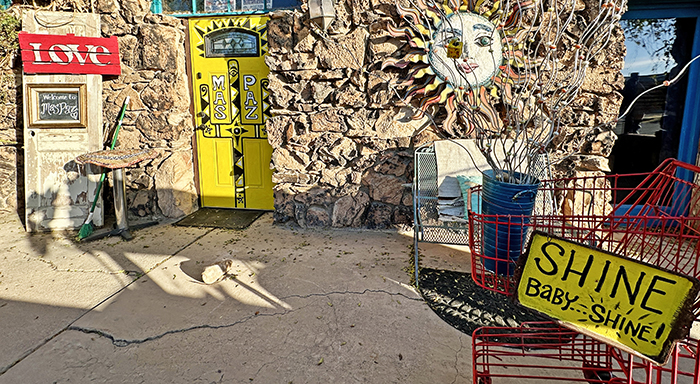
“Wenden started to experience repeated 100 year floods and they were really detrimental for many home and business owners,” says Saiter. “Sink holes would appear around town after a flood and that took me down the path of the land subsidence that Wenden is actively experiencing, largely due to corporate agriculture.”
A convening to bring the community together
Despite this long list of challenges, community members are taking action, together. There’s growing support for new groundwater protections, as well as things like incentives for drought-resistant crops.
After months of planning and organizing, on March 26-27, 2025, 26 residents, along with a dozen facilitators and water experts, gathered for a two-day Rural Groundwater Resilience Workshop in La Paz County that had been six months in the making.
With an agenda co-developed with local residents, the convening opened with an evening event at the Salome VFW that included a viewing of the film that originally inspired Irwin to apply for the workshop support.
Participants also began to develop a shared timeline of the history of water in the county, an activity that continued into the next morning, facilitated by workshop partners Tahnee Robertson and Brian Manwaring of Southwest Decision Resources.
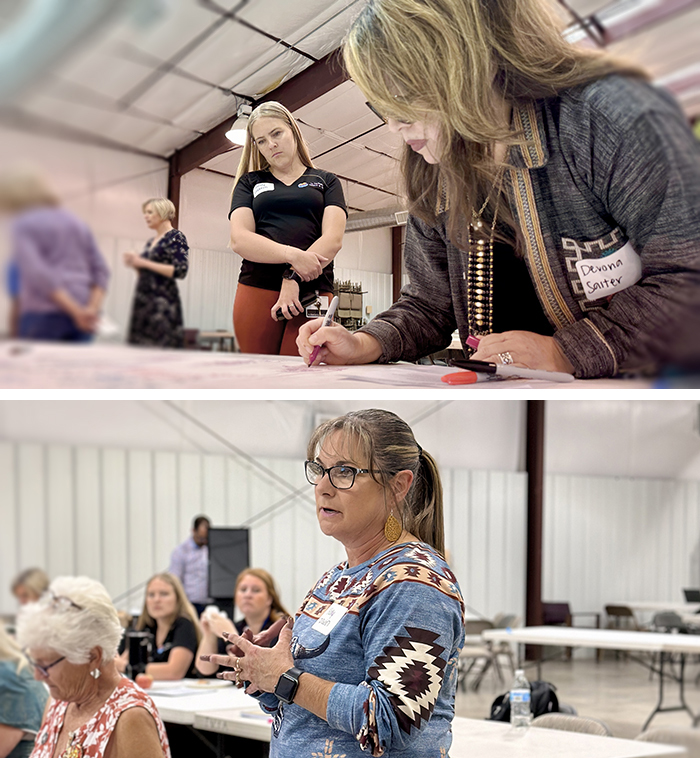
After opening comments from Supervisor Irwin, the workshop featured presentations from leaders in groundwater science and policy discussing topics that community members had identified as important to learn more about.
Neha Gupta of the University of Arizona, Jay Famiglietti, director of science for the Arizona Water Innovation Initiative, and Sarah Porter from the Kyl Center for Water Policy brought insights on groundwater data, satellite-based groundwater measurement and state laws and policies to residents.
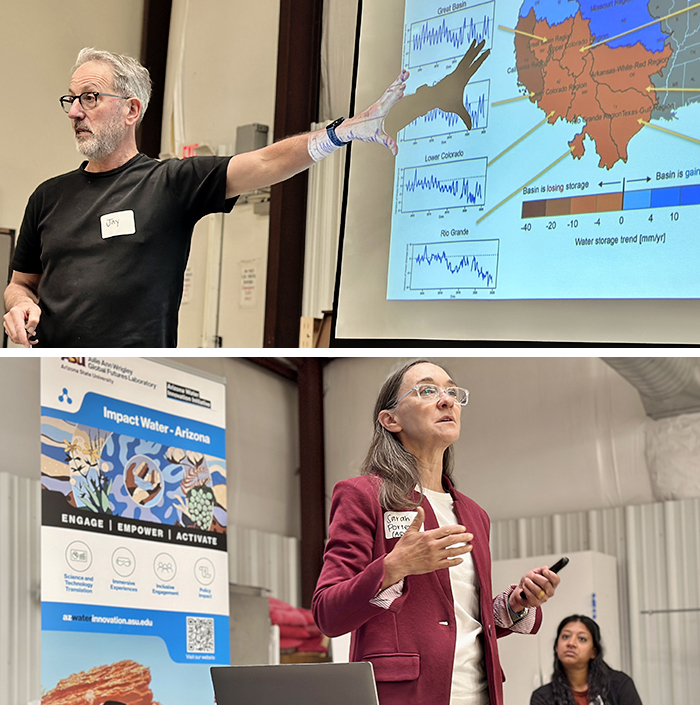
Next, small tables of rotating participant discussions allowed residents to discuss their hopes for the future of groundwater in their county. Residents emphasized a range of concerns. Many expressed fear that their children and grandchildren would not be able to remain in the area due to water insecurity.
Farmers talked about choosing between installing expensive new wells or shutting down operations entirely. Others shared frustration that large corporations seem to bypass rules that locals must follow. A longtime rancher noted that the stress of declining groundwater levels has affected community mental health.
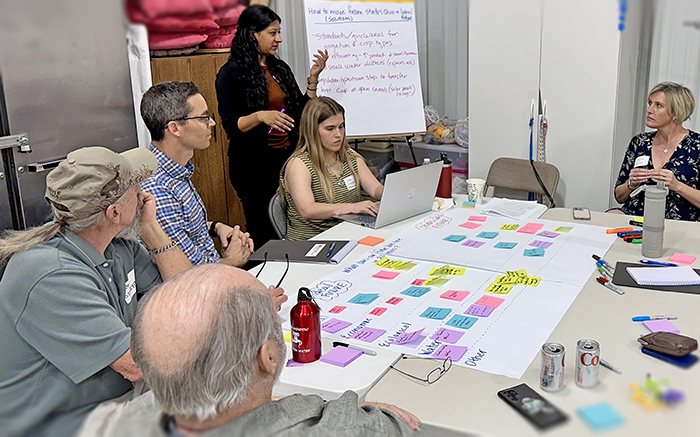
The discussions were often passionate, with diverse participants – from different parts of the county, some new to the area and some that had been there for decades and generations, with different roles and perspectives and of varied ages – coming up with solutions to the challenges that they are facing.
Key community leaders added strength and local knowledge. Rob McDermott, a veteran and RV park owner, spoke of his own well going dry and the high cost of drilling deeper. As he told The New York Times last year, when McDermott’s 600-foot well went dry, it cost him $120,000 to dig a deeper one.
Sharon Rubin, a local historian, has been instrumental in preserving La Paz’s water story and working leaders like Irwin. Susan Sewell, of the McMullen Valley Chamber, helped ensure the event was well-attended.
The work continues
Workshop participants were energized by the experience and eager to move forward. Together, they represent a powerful coalition with lived experience and deep commitment.
Saiter summed up the feelings expressed by many, saying “I want our community to be one of the most desirable places to live, to be able to raise animals like chickens, to grow our own food and have lots of room for desert recreation, all because we have the water we need. We have a desert paradise here and I want us to have this lifestyle for many generations to come.”
What comes next is turning that energy into action. Workshop participants expressed desires to expand their coalition, invite larger water users to the table and create a shared hub for communication and data. They are also interested in pursuing local strategies, like improved agricultural efficiency and changes to drought-resistant crops.
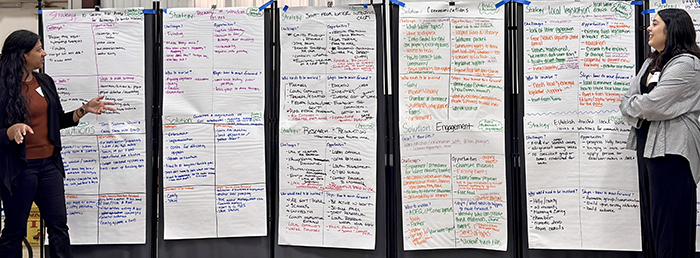
La Paz County Supervisor Holly Irwin continues to lead these efforts. She was a vocal advocate in a recent meeting with Governor Hobbs, where she pushed for state-level groundwater reform, and testifies to the state legislature when invited. Irwin was thrilled with the workshop and hopeful about the momentum that it created.
“The workshop was very helpful and I am extremely thankful that La Paz County was chosen! I was impressed with how organized and enthusiastic everyone was,” says Irwin. “Everyone enjoyed the speakers and information that was provided to the group and how we broke out into groups to discuss.”
“We were all provided with updated data regarding our groundwater basins which outlined the severity of our situation within La Paz County,” Irwin continued. “It also allowed for the community to interact and give feedback on the information which is critical for me to continue to represent my constituents' needs and concerns for our future.”
Saiter agrees, saying “it was great to see so many ideas come out of our discussions, to share stories and to learn more about the technology and policy solutions that exist. The workshop brought forth facts and resources, validated our concerns and reignited the fire for the cause!”
With local champions, growing partnerships and renewed public interest, La Paz is stepping up to the plate. Irwin hopes to keep the lines of communication and community momentum moving forward as she works with the community to address her county’s groundwater issues.
The Impact Water - Arizona team is also committed to ongoing engagement with local communities like those in La Paz to ensure that rural Arizonans have the tools they need to protect their groundwater in ways that work for them.
“It has been a great joy working so closely with the folks in La Paz County on this workshop,” says Michelle Oldfield, the community engagement specialist for Impact Water - Arizona. “We are excited to keep working with them as they find ways to protect their groundwater that make sense locally.”
The Impact Water - Arizona and Arizona Water Innovation Initiative teams at ASU are continuing to engage in communities they’ve already worked in, as well as developing further groundwater resilience workshops in other key rural areas around the state.
“With momentum building and more local leadership stepping up, rural Arizona is shaping its own vision for groundwater resilience,” says Craig. “We at ASU are thrilled to be able to bring the tools and data to inform and support communities in that process.”
Related stories:
- Community partner profile: La Paz County resident DeVona Saiter discusses rural groundwater issues
- Empowering rural communities with trustworthy groundwater information
- Supporting rural communities to protect their groundwater
- Navigating uncertainty: Collaborative solutions for sustainable water management in the rural west